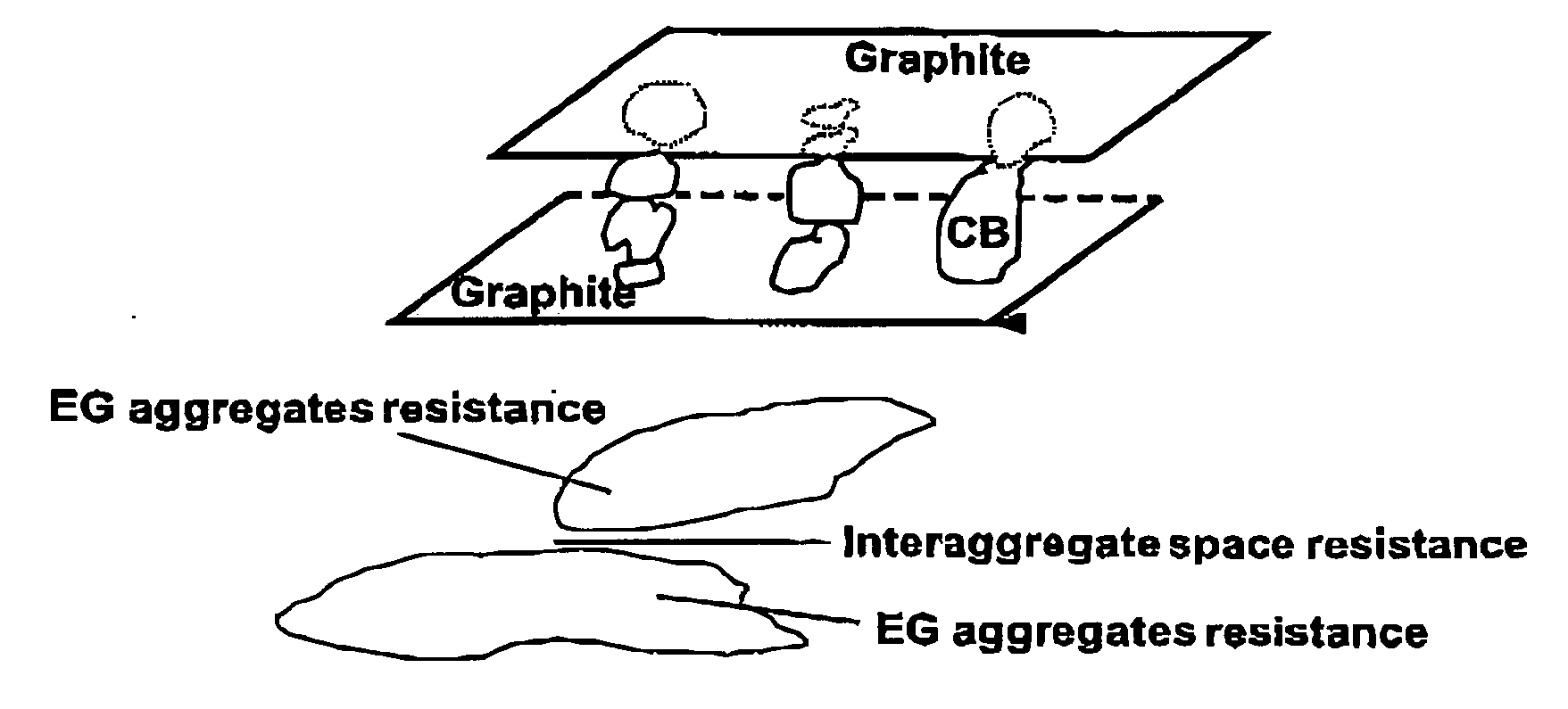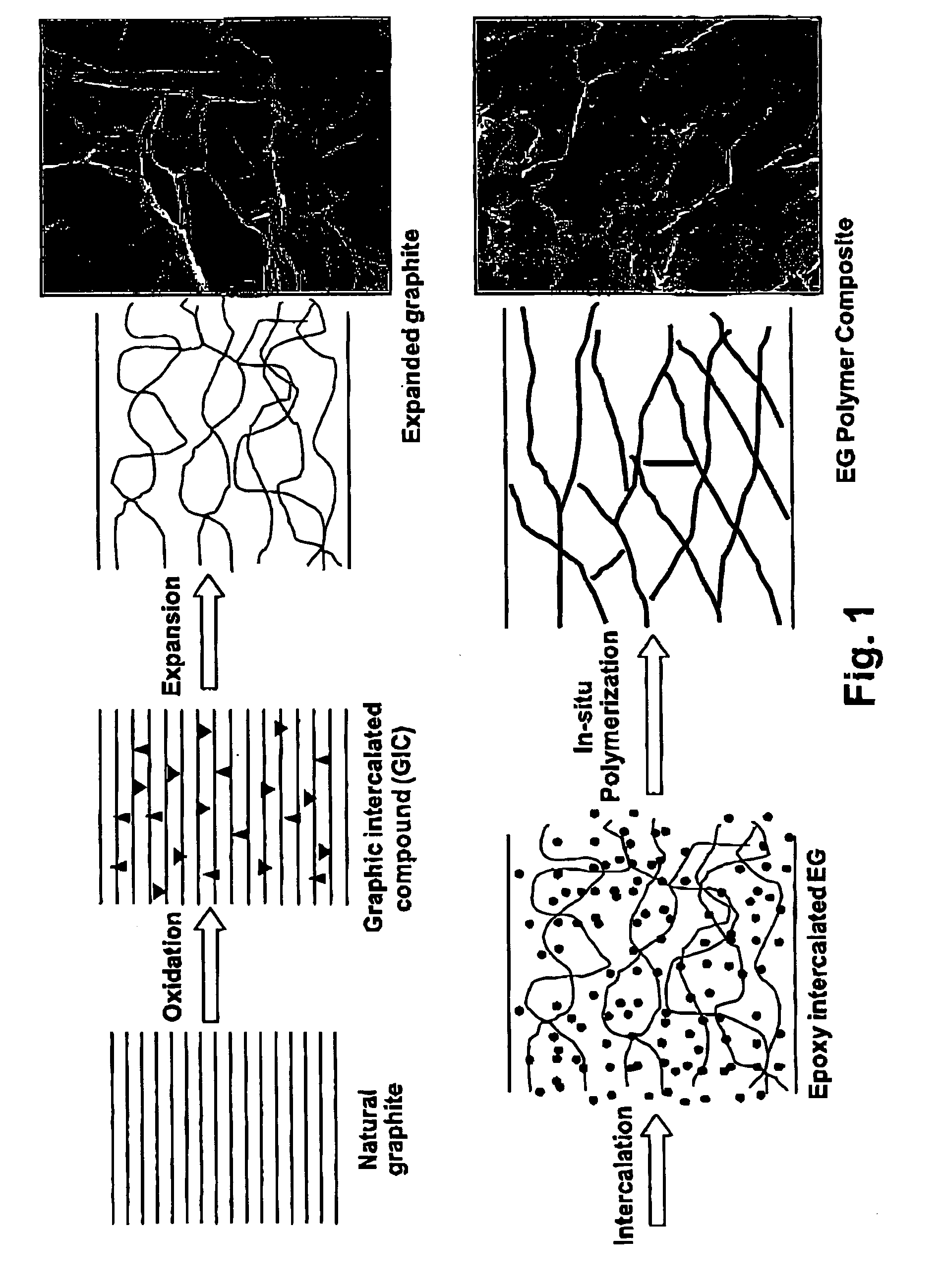Carbon-filled polymer composite bipolar plates for proton exchange membrane fuel cells
a proton exchange membrane and composite bipolar plate technology, applied in the direction of electrochemical generators, sustainable manufacturing/processing, final product manufacturing, etc., can solve the problems of low through-plane conductivity and low values and achieve low cost, low density, and high value of through-plane and in-plane electrical conductivity
- Summary
- Abstract
- Description
- Claims
- Application Information
AI Technical Summary
Benefits of technology
Problems solved by technology
Method used
Image
Examples
Embodiment Construction
[0025]The present invention discloses polymer composite bipolar plates of carbon-filled thermosetting epoxy produced by compression molding. The polymer composites are made by compression molding mixtures of epoxy, epoxy curing agent, expanded graphite, and conductive carbon black. The curing reaction between epoxy and epoxy curing agent is triggered at the time of compression molding to obtain composite materials with strong mechanical properties and high electrical conductivity. The cured composite withstands continuous operating temperatures from about 30° C. to about 200° C. without a deterioration of mechanical integrity. A synergistic combination of expanded graphite and particulate conductive carbon black enables the composite to be electrically conductive for both in-plane and through-plane directions. Polymer composites produced with synergistic combinations of conductive fillers provide higher in-plane and through-plane electrical conductivity compared to composites prepar...
PUM
| Property | Measurement | Unit |
|---|---|---|
| Temperature | aaaaa | aaaaa |
| Temperature | aaaaa | aaaaa |
| Temperature | aaaaa | aaaaa |
Abstract
Description
Claims
Application Information
 Login to View More
Login to View More - R&D
- Intellectual Property
- Life Sciences
- Materials
- Tech Scout
- Unparalleled Data Quality
- Higher Quality Content
- 60% Fewer Hallucinations
Browse by: Latest US Patents, China's latest patents, Technical Efficacy Thesaurus, Application Domain, Technology Topic, Popular Technical Reports.
© 2025 PatSnap. All rights reserved.Legal|Privacy policy|Modern Slavery Act Transparency Statement|Sitemap|About US| Contact US: help@patsnap.com



